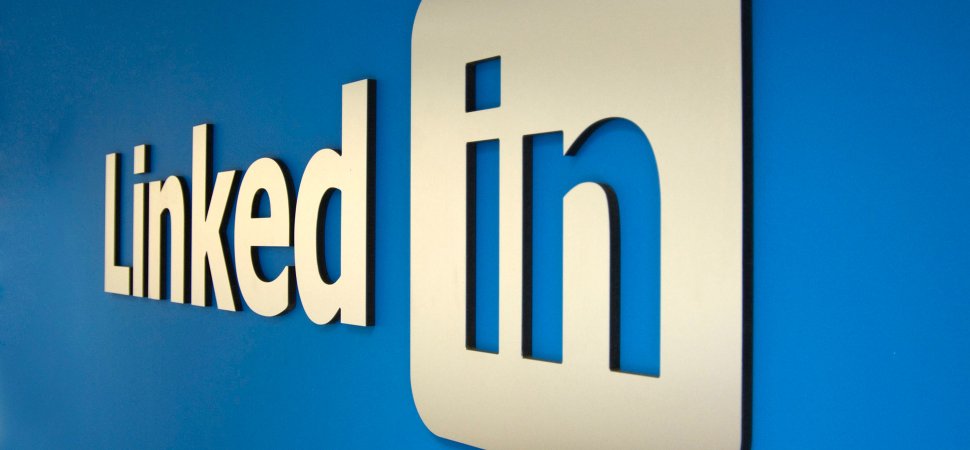
At Graduateships we set out to make it easier for everyone looking for a graduate position. Besides our general Graduateships report, we wanted to give all graduates a helping hand in what is important when searching for a job and what you can do to improve your chances!
That is why we created this guide to how you can improve your LinkedIn and what aspects you should be wary of. A LinkedIn profile can be a great tool for showing your employer that you are professional and serious about your career.
We have compiled 5 things that we believe you should do with your Linkedin and additionally added some small clever tricks and some great profiles to compare yours to, at the bottom. But remember: It’s individual! There are quite a few guides online – and this is only what we think and suggest here at Graduateships.
The first thing we’d like to address is quality. Make sure you put in the time to make it awesome.
Simply put, the more complete your profile is, the better the odds of attracting that awesome job that you are looking for.
Make sure you have filled in all relevant sections, such as skills, former jobs etc. Here LinkedIn actually has a “completeness” bar, so you can check if you’re missing something.
Besides that it is very important that you take your time and fill in the correct information, elaborate on your achievements and avoid things like spelling mistakes.
All together: Make sure your LinkedIn is quality.
The second thing you should always consider is your photo. Make sure your photo is “LinkedIn suitable”.
Choose a clear, friendly, and appropriately professional image as your LinkedIn picture. Make sure it’s a picture of you and make sure that you can see your face. Take a look around at what the people in your target company, industry sector, or business level are wearing. Match that. (Pro tip: If you can show yourself in action, do it, this often seems less staged and less aggressive. A photo can go a long way to convey passion, energy, charisma, empathy, and other soft skills that are hard to write about.)

The third thing we suggest you focus on is your achievements. Make sure you put specific accomplishments and use numbers right up front!
Much like in a CV, your past jobs are your best chance to sell yourself. That is also why it’s important to be specific about what you have achieved. Eg. if you’ve secured funding for a startup – write that and how much! You should never underestimate the power of a few key stats to impress a reader.
It’s also great if you have volunteer experience and/or have done specific projects. These can be great to showcase more about your personality and stand out.
Furthermore, you should always add all the languages you speak! Often recruiters and headhunters have requirements about what languages their candidates should speak, which is why you should add it, also your native tongue – even though you might think that it is obvious, then it’s all about how LinkedIn can filter you in their recruiter tools. If you would add it in a CV it usually also works on Linkedin.
Once you have done the 3 things above – start connecting!
Having 50 or fewer connections on LinkedIn tells recruiters one of three things: 1) You are a recluse who knows very few people, 2) You’re paranoid about connecting with others, or 3) Technology and social media are scary to you. None of these are good.
This doesn’t mean that you should go out and add everyone you see on LinkedIn. It’s a balancing act. If you need a tip on whether or not you should add them, just consider that the activity of everyone you add will show on your LinkedIn feed. If it’s someone who you think will have relevance on your feed and that you’re interested in following – go connect!

Last advice: Don’t go overboard and copy what works for other people!
Even though it contradicts some of the things we wrote in the tips above, it is important not to go overboard. LinkedIn offers a lot, as in A LOT, of possibilities of promoting yourself. Make sure you take a step back and take a look at your profile. How does it look for an outside person? Or get an outside person to look at it and get their feedback.
In general it’s great getting inspiration from others. Look at other people in your industry – or at other students – what have they written? What do you personally like? Get inspired and edit accordingly.
2 small tricks:
1. Get a Custom URL
You should definitely consider getting a custom URL. By getting a custom URL it’s easier to link to your profile and generally gives off a professional vibe. It should ideally be something like linkedin.com/yourname, rather than the random combination of numbers that LinkedIn automatically assigns you when you sign up. You do this by going to settings and privacy and then choosing privacy and then edit your public profile. At the bottom of the gray window that shows your basic information, there you’ll see a Public Profile URL. Click “Edit” next to the URL, and specify what you’d like your address to be. When you’re finished, click Set Custom URL.
2. Go anonymous
This is especially great if you are interested in looking for inspiration, but not interested in giving away too much attention to your (maybe) unfinished profile. As you might know, the standard-setting of LinkedIn is that once you click and view a profile, that person is able to see that you’ve viewed the profile. By going anonymous they will only be able to see that someone’s viewed their profile and not who. (Note: you won’t be able to see who views your profile either if someone did.)
You go anonymous by going to settings and privacy and then choosing privacy and then choosing profile viewing options and anonymous.
At Graduateships we have gone through our LinkedIn network to see if we could find some great examples of LinkedIn profiles. Here is some of them:
Steve Weiss:
https://www.linkedin.com/in/stevejweiss/
Steve has a great profile in several aspects. First of all, he has a simple, professional, yet relaxed profile picture.
He has written a great summary that focuses on him and the company he is CEO of, but not so much that it becomes incomprehensible and confusing.
He also has a great summary of his past achievements. He focuses on what he has achieved within the company, in a simple, yet extensive manner.
Oliver Hinnerskov Haulund:
https://www.linkedin.com/in/oliverhhaulund/
Oliver here is a great example of how you’re easily able to make a great LinkedIn, even though your experience is limited and that you’re young.
Oliver has a great and professional profile picture and has listed his past achievements and experience, within his former jobs, very well. Focused on numbers and written in beautiful bullets – all in one a non-complicated LinkedIn, like it should be.
Melissa Heisler:
https://www.linkedin.com/in/melissaheisler/
This profile is from Komarketing.com and also shows a great example of how to list both your experience, how to exploit the ‘Top skills’ function and in general keeping a simple yet extensive profile.
So remember, if they can do it – so can you! Go out there and give your LinkedIn a makeover!
We wish you the best of luck here at Graduateships.
Do you have any questions in regards to how to style your LinkedIn? Email support@graduateships.com and we will see if we can help!